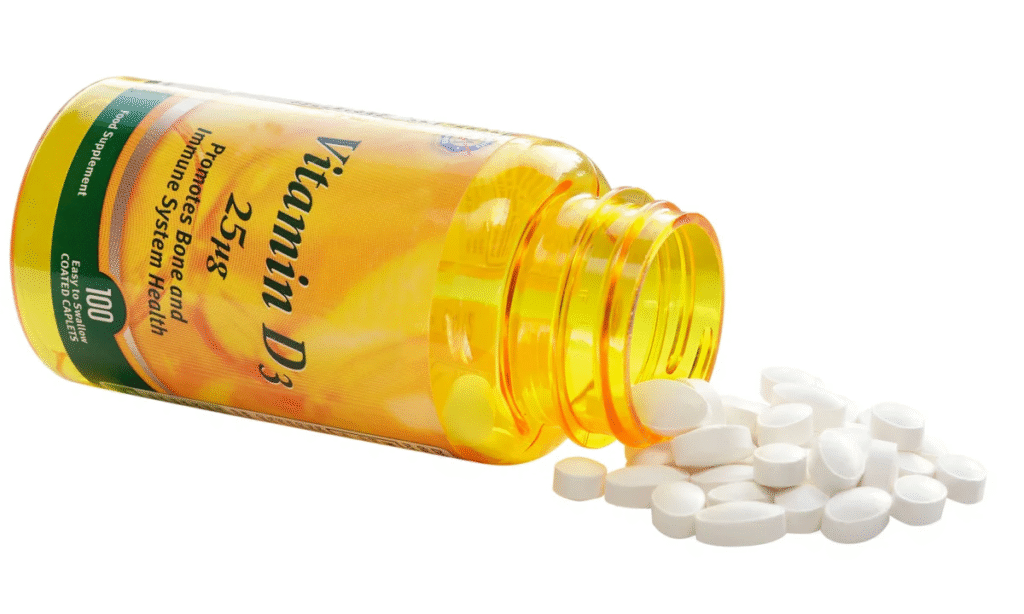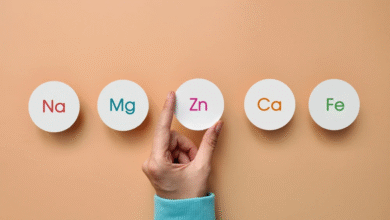Vitamin D Resistance: Why Obese Individuals Can’t Benefit Properly

The Shocking Vitamin D Paradox: Protection Against Cancer – But Only If You’re Not Overweight
Groundbreaking research published in November tracked 25,000 participants over five years, revealing a startling finding: While adequate vitamin D levels reduced cancer risk by 20% in normal-weight individuals, this protective effect completely disappeared in obese participants. Those maintaining healthy weights with optimal vitamin D showed an impressive 38% lower cancer risk – despite consuming only 2,000 IU daily, far below the recommended 10,000 IU minimum.
The Science Behind Vitamin D Resistance in Obesity
The Absorption Barrier
Excess body fat actively sequesters vitamin D, making it unavailable for biological use. Studies demonstrate that:
- Obese individuals require 2-5 times more vitamin D to achieve the same blood levels as lean counterparts
- Subcutaneous fat acts as a “sink,” trapping the fat-soluble vitamin
- Each 10% increase in BMI correlates with a 4.2% decrease in vitamin D bioavailability
The Insulin-Vitamin D Connection
Emerging research reveals a vicious cycle:
- Obesity induces vitamin D receptor dysfunction
- This exacerbates insulin resistance
- Insulin resistance further impairs vitamin D activation in the kidneys
- The resulting deficiency worsens metabolic dysfunction
Three Alarming Clinical Studies on Vitamin D Supplementation
| Study Duration | Daily Dose | Time to Normalize Levels | Notable Findings |
|---|---|---|---|
| 1 month | 1,000-2,000 IU | No improvement | Weekly dosing proved ineffective |
| 4 months | 1,000-2,000 IU | 16 weeks | Slow, gradual increase observed |
| 3 months | 1,600 IU | 12 weeks | Baseline deficiency prolonged recovery |
Shockingly, some patients taking 50,000 IU weekly for months still fail to reach optimal serum levels (50-80 ng/mL).
10 Hidden Factors Sabotaging Your Vitamin D Absorption
- Gut Health Compromise
- Celiac disease, Crohn’s, and leaky gut reduce absorption by up to 40%
- The Aging Factor
- After 50, skin produces 75% less vitamin D from sunlight
- Melanin’s Double-Edged Sword
- Darker skin requires 3-5x longer sun exposure than fair skin
- The Obesity Penalty
- Each 10 kg/m² BMI increase lowers vitamin D levels by 4.2 ng/mL
- Sun Exposure Myths
- Exposing just face/hands (5% body surface) provides negligible amounts
- Metabolic Disorders
- Diabetes, hypertension create higher vitamin D demands
- Seasonal Deficiency
- Winter sunlight lacks sufficient UVB radiation above 35° latitude
- Genetic Polymorphisms
- VDR gene variants affect receptor sensitivity in 30% of population
- Chronic Infections
- Pathogens like EBV can block vitamin D receptor sites
- Medication Interference
- Statins, steroids, and weight-loss drugs impair metabolism
The Cancer Connection: How Vitamin D Deficiency Fuels Tumor Growth
Triple Threat Mechanism
- Immune System Failure
- Obesity cripples natural killer (NK) cells that destroy tumors
- Chronic Inflammation
- Adipose tissue secretes IL-6 and TNF-α, creating a pro-cancer environment
- Angiogenesis Stimulation
- Low vitamin D allows uncontrolled blood vessel growth to tumors
The 10,000 IU Solution: Safe Dosing Protocol
Optimal Daily Intake
| Population | Minimum Daily Dose | Blood Level Target |
|---|---|---|
| Healthy Adults | 10,000 IU | 50-80 ng/mL |
| Overweight/Obese | 15,000-20,000 IU | 60-80 ng/mL |
| Dark Skin/Seniors | 10,000-15,000 IU | 50-80 ng/mL |
Safety Note: Toxicity risk begins only above 40,000 IU/day sustained for months.
Absorption Boosters
- Take with healthy fats (avocado, olive oil)
- Combine with magnesium and vitamin K2
- Consider liposomal delivery for gut issues
The Keto Advantage: Enhancing Vitamin D Utilization
A ketogenic diet provides three synergistic benefits:
- Reduces Inflammation
- Lowers IL-6 by up to 39% in obese individuals
- Improves Receptor Sensitivity
- Ketones upregulate vitamin D receptor expression
- Promotes Weight Loss
- Each 10% weight loss increases vitamin D levels by 15%
Action Plan: 7 Steps to Overcome Vitamin D Resistance
- Get Tested
- Request 25(OH)D blood test (optimal: 60-80 ng/mL)
- Smart Supplementation
- Start with 10,000 IU D3 + 200 mcg K2
- Strategic Sun Exposure
- 20-30 minutes midday sun on 40% bare skin
- Metabolic Repair
- Implement intermittent fasting (16:8 protocol)
- Gut Healing
- Incorporate bone broth and probiotics
- Exercise Synergy
- Resistance training increases vitamin D receptor density
- Ongoing Monitoring
- Retest levels every 3 months until stabilized
Beyond Cancer: The Systemic Benefits of Optimal Vitamin D
- 72% reduction in Type 1 diabetes risk (NEJM)
- 50% lower cardiovascular mortality (JACC)
- 67% decreased multiple sclerosis incidence (JAMA Neuro)
- 40% reduction in dementia risk (Neurology)
For obese individuals, correcting vitamin D deficiency could be the single most impactful health intervention, potentially offering greater protection than weight loss alone. The time to act is now.






